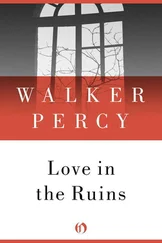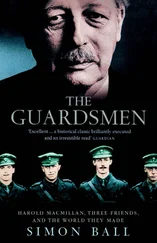1 ...8 9 10 12 13 14 ...36 At their meeting with the King, Solander and Banks no doubt brought examples of the plants they had collected.[65] Newspaper articles at the time report that Solander had already been to the royal gardens at Kew and had planted some samples from the voyage – ‘they have been set in the Royal Gardens … and thrive as well as in their natural soil’, commented one article.[66] For the rest of that month, Banks and Solander made frequent visits to Richmond during which time the King also examined their collection of plant drawings.[67]
When, in the year following the triumphant return of the Endeavour , the government decided on a second voyage to the Pacific, Banks began planning it as if it were his own. He convinced the First Lord of the Admiralty to let him radically alter the structure of HMS Resolution , the main ship, to accommodate him and his substantial entourage and equipment. He had gone too far. The ship was deemed unseaworthy on its first trial. Cook agreed, so did the Admiralty and the Navy Board, and the ship was ordered to be returned to its original state. Banks was devastated and angry at this turn of events and removed himself, his entourage and equipment from the ship and instead chartered a vessel, the Sir Lawrence , for his own scientific expedition to Iceland by way of the Hebrides.[68]
The Resolution debacle was undoubtedly a great disappointment to Banks but from it he learned a valuable lesson. He no longer tried to impose his will on others but sought instead to influence and persuade. In time he managed to restore his friendly relations with the Admiralty and Cook.
After the expedition to Iceland, and apart from a brief trip to Holland in 1773, Banks never went to sea again, but by then he had already spent four and a half years on ships sailing over much of the globe and collecting natural-history specimens. In this respect, Banks’s experiences set him apart from most naturalists of the time, but there was more to it than that, for during the time he was at sea he learned about how ships worked; about shipboard spaces, and how they might be altered for global botanical projects; and about how naval careers advanced and how much commanders mattered. Though Banks never went to sea again after he was twenty-nine, ships and the sea shaped the rest of his adult life.
Instead of travelling Banks established himself at home in England. In the summer of 1777, he moved from his accommodations in New Burlington Street to a grand house in Soho Square where his sister Sarah Sophia joined him. In the following year, at the age of thirty-five, he was elected President of the Royal Society, a post he occupied until his death in 1820. In 1779, Banks married Dorothea Hugessen and she joined the Soho Square household. A pattern of life was laid down: most of the year was spent in London, with a couple of months in the autumn at his country estates.[69]
Soho Square was much more than just a family home. It housed Banks’s personal library of books (in many languages and exceeding 20,000 titles at his death) and an unknown quantity of pamphlets and drawings;[70] as well as a vast herbarium, and zoological and mineral collections.[71] From 1773, Solander, Linnaeus’s disciple, was always near Banks, helping him with his collections, especially those gathered in the Pacific and on the Iceland expedition.[72] Soho Square’s international scholarly resources – including Solander: in himself, a major attraction – were made freely available to interested visitors from all parts of the world. Eventually, a five-volume catalogue of the library’s holdings was published and made public, under the guidance of Jonas Dryander, a Linnaean-trained Swede like Solander, who became Banks’s librarian following the latter’s death in 1782.[73]
In the study, close by the library and herbarium, were volumes of letters, both incoming and copies of those going out. It is estimated that at his death these volumes contained 100,000 letters and represented a global correspondence network of several thousand people from all walks of life, many of whom became life-long friends.[74]
Banks clearly lived a busy and satisfying life in England and yet, as he confided to his friend Sir William Hamilton, the British Ambassador to the Neapolitan court, he sorely missed the excitement of the scientific adventures of his youth.[75]
Although Banks and Solander were initially presented to the King at his summer home in Richmond, he soon moved to Kew, in a property that then stood in the gardens. The story goes back to the early 1730s when Frederick, the Prince of Wales, George’s father, leased a house opposite to what is now called Kew Palace.[76] This house, which soon came to be called the White House, was designed to be a royal residence and act as a family retreat during the summer months. Not long after signing the lease, the beginnings of a garden were laid out and plants were brought into cultivation. Over the following years the gardens were expanded as more land was bought.
On 20 March 1751, Frederick died unexpectedly aged forty-four and the house and gardens passed to his wife, Augusta, the Dowager Princess of Wales. With her close botanical advisers, especially John Stuart, the 3rd Earl of Bute, who had his own magnificent garden at Luton Hoo, Augusta, who spent part of each year at the White House, was able to expand Kew gardens. Many exotic plants were donated by Bute himself and leading London botanists, many of whom he knew well – other plants were purchased from London nurserymen.[77] A key moment in the history of the gardens for the next few decades was the appointment in 1759 of William Aiton to be in charge of the physic garden.[78] Aiton was born in 1733 in Lanarkshire, Scotland and came to London in 1754, where he found work at the Chelsea Physic Garden, then under the direction of Philip Miller. Between Aiton and Bute, Kew’s stock of plants became large and diverse. By the end of the 1760s, with plants from many parts of the world, notably North America, Kew was, according to many contemporary observers, Britain’s best-stocked garden and rivalled similar royal gardens in Europe, especially the Jardin du Roi in Paris and the Schönbrunn in Vienna.[79]
Then another tragedy struck the royal family. Augusta died in February 1772. George III, who had been spending the summer months at Richmond Lodge, now removed his family to Augusta’s White House, which Queen Charlotte, his wife, began to redesign for their occupancy.[80] Bute disappeared from the scene and the royal gardens at Kew now came under the King’s direct control.
Banks’s relationship with Kew certainly went back to 1764, for it was then that he met Aiton, possibly through Daniel Solander or James Lee at the Vineyard Nursery, Hammersmith.[81]
For the next few years Banks had little more to do with Kew than to visit and observe.
By the end of 1776, however, Banks’s relationship with Kew had changed significantly.[82] Banks, himself, had trouble defining his new role: all he could say, as he tried to describe it in a letter to the Spanish Ambassador in London in 1796, was that for many years he ‘exercis[ed] a kind of superintendence over His Royal botanic gardens’.[83]
The ‘superintendence’, as he called it, might have been the single most important part of Banks’s exceedingly busy life. It was always on his mind and, whenever the opportunity presented itself for a naturalist or gardener to accompany a voyage, Banks tried to ensure that Kew’s needs were not forgotten.
This was the beginning of a very long relationship between Banks and the King. It would last for almost forty years and ended only in 1810 when George’s debilitating illness made contact impossible. Banks would meet the King whenever possible on a Saturday, usually at the royal gardens at Kew, and they would spend several hours walking, talking about plants and other topics of mutual interest, particularly about the development of the gardens at Kew.[84]
Читать дальше












